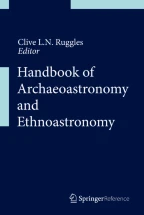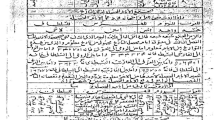Ancient Egyptian Calendars

The study of the Egyptian calendar lends itself to a deeper analysis in which the original system of calendrics was based on the moon and the later one, organized by a simple device of 365 days per year. The latter, originally determined by the sighting of the star Sothis (Sirius) in the east after a period of 70 days of invisibility, is called the Civil Calendar. The change, however, brought with it an alteration in the names of the Egyptian months.
This is a preview of subscription content, log in via an institution to check access.
Access this chapter
Subscribe and save
Springer+ Basic
€32.70 /Month
- Get 10 units per month
- Download Article/Chapter or eBook
- 1 Unit = 1 Article or 1 Chapter
- Cancel anytime
Buy Now
Price includes VAT (France)
eBook EUR 1,016.49 Price includes VAT (France)
Hardcover Book EUR 1,371.49 Price includes VAT (France)
Tax calculation will be finalised at checkout
Purchases are for personal use only
Similar content being viewed by others

The Jalālī Calendar: the enigma of its radix date
Article 12 November 2019

Exodus Dates and Theories
Chapter © 2015

An Ethnoarithmetic Excursion into the Javanese Calendar
Chapter © 2021
References
- Berlev OD (1999) Precisely two Sothic periods between year 18 of king Sénw/Tosorthros and year 2 of Pharaoh Antoninus Pius. In: Pavlova OI (ed) Ancient Egypt: language, culture, consciousness. Priscel’s, Moscow, pp 42–62 Google Scholar
- Clagett M (1995) Ancient Egyptian science: calendars, clocks, and astronomy. American Philosophical Society, Philadelphia MATHGoogle Scholar
- Depuydt L (1997) Civil calendar and lunar calendar in ancient Egypt. Peeters, Leuven Google Scholar
- Depuydt L (1999) The two problems of the month names. Revue d’Égyptologie 50:107–133 ArticleGoogle Scholar
- Depuydt L (2003) Esna’s triple new year. J Am Res Cent Egypt 40:55–67 ArticleGoogle Scholar
- Devauchelle D (2005) Écrire le nom des jours épagomènes et du premier jour de l’an [O. Dém Delm 4–1]. Studi di Egittologia e di Papirologia 2:75–81 Google Scholar
- Gardiner A (1906) Mesore as the first month of the Egyptian year. Zeitschrift für ägyptische Sprache 43:136–144 Google Scholar
- Harrison G (1994) The position of the day day gr n ≈ nw m sß.f — “the night the child is in his nest” within the epagomenal period. Göttinger Miszellen 143:77–79 Google Scholar
- Krauss R (1985) Sothis- und Monddaten: Studien zur astronomischen und technischen Chronologie Altägyptens. Gerstenberg Verlag, Hildesheim Google Scholar
- Krauss R (1993) Was wäre, wenn der altägyptische Kalendertag mit Sonnenaufgang begonnen hätte? Bulletin de la Société Égyptologique du Genève 17:63–71 Google Scholar
- Krauss R (2008/2009) Egyptian calendars. KBN 3:105–113 Google Scholar
- Krauss R (2009) Astronomical chronology. In: Belmonte JA, Shaltout M (eds) In search of cosmic order: selected essays on Egyptian archaeoastronomy. Supreme Council of Antiquities, Cairo, pp 135–154 Google Scholar
- Loprieno A (1986) Zahlwort. In: Helck W, Otto E (eds) Lexikon der Ägyptologie, vol VI. Harrassowitz, Wiesbaden, pp 1306–1319 Google Scholar
- Luft U (1992) Die chronologische Fixierung des ägyptischen Mittleren Reiches nach dem Tempelarchiv von Illahun. Verlag der Österreichischen Akademie der Wissenschaften, Vienna Google Scholar
- Neugebauer O (1939) Die Bedeutungslosigkeit des ‘Sothisperiode’ für die älteste ägyptische Chronologie. Acta Orientalia 17:169–185 Google Scholar
- Neugebauer O (1942) The origin of the Egyptian calendar. J Near East Stud 1:396–403 ArticleGoogle Scholar
- Neugebauer O (1969) The exact sciences in antiquity, 2nd edn. Dover, New York Google Scholar
- Parker RA (1950) The calendars of ancient Egypt. University of Chicago Press, Chicago MATHGoogle Scholar
- Parker RA (1955) The problem of the month-names. Revue d’Égyptologie 10:9–31 Google Scholar
- Parker RA (1957) The problem of the month-names: a reply. Revue d’Égyptologie 11:85–107 Google Scholar
- Sauneron S (1962) Les fêtes religieuses d’Esna. Institut Français d’Archéologie Orientale, Cairo Google Scholar
- Sloley RW (1948) The origin of the 365-day Egyptian calendar. Annales du Service des Antiquités de l’Égypte 48:261–265 Google Scholar
- Spalinger AJ (1994) Some remarks on the epagomenal days in ancient Egypt. J Near East Stud 54:33–47 ArticleGoogle Scholar
- Spalinger AJ (1995) Notes on ancient Egyptian calendars. Orientalia 64:17–32 Google Scholar
- Spalinger A (2006) Land brightens, day begins. In: Spalinger A (ed) Five views on Egypt. Seminar für Ägyptologie und Koptologie, Göttingen, pp 51–85 Google Scholar
- Spalinger AJ (2011) The beginning of the civil calendar. In: Bárta M, Coppens F, Krejci J (eds) Abusir and Saqqara in the year 2010/1. Czech Institute of Egyptology, Prague, pp 723–735 Google Scholar
- Spalinger AJ (2012) Time and the Egyptians: feasts and fights. Yale Egyptological Series, New Haven (in press) Google Scholar
Author information
Authors and Affiliations
- Department of Classics and Ancient History, University of Auckland, Auckland, New Zealand Anthony Spalinger
- Anthony Spalinger


